Painted Wooden Spoon Item Number: E231014-0 from the National Museum of Natural History
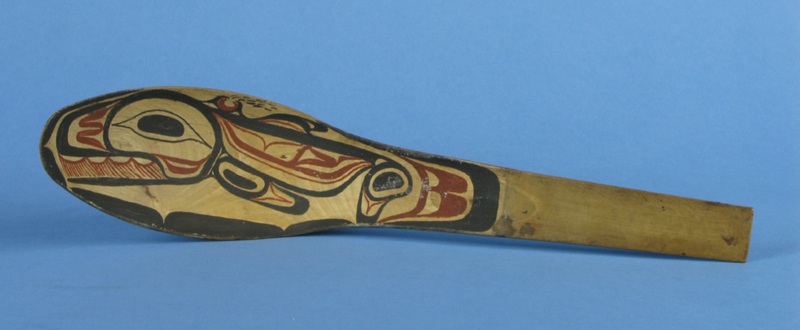
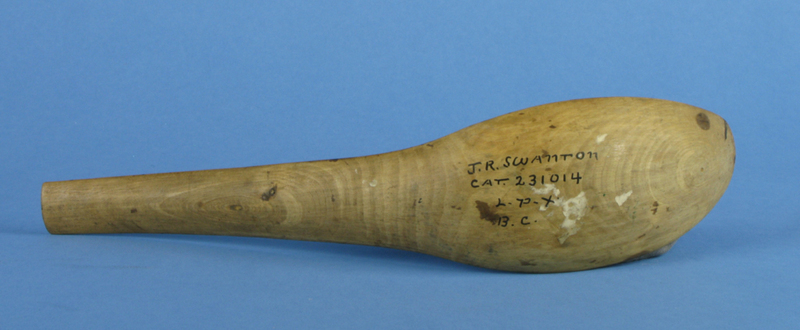
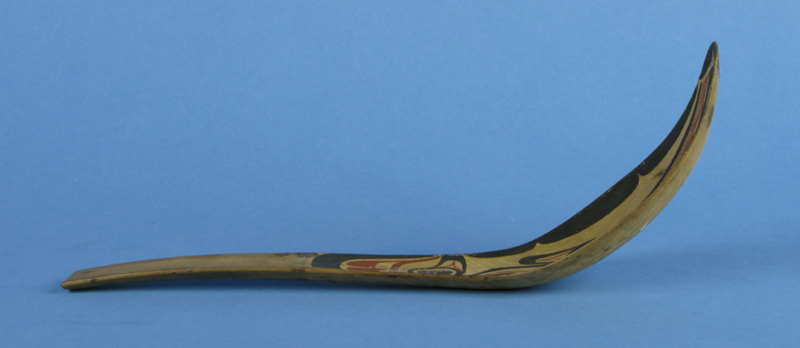
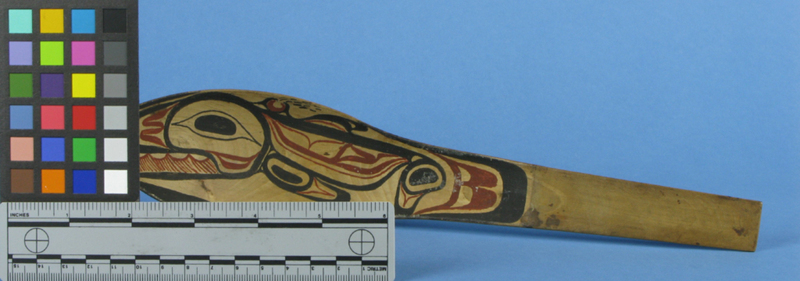
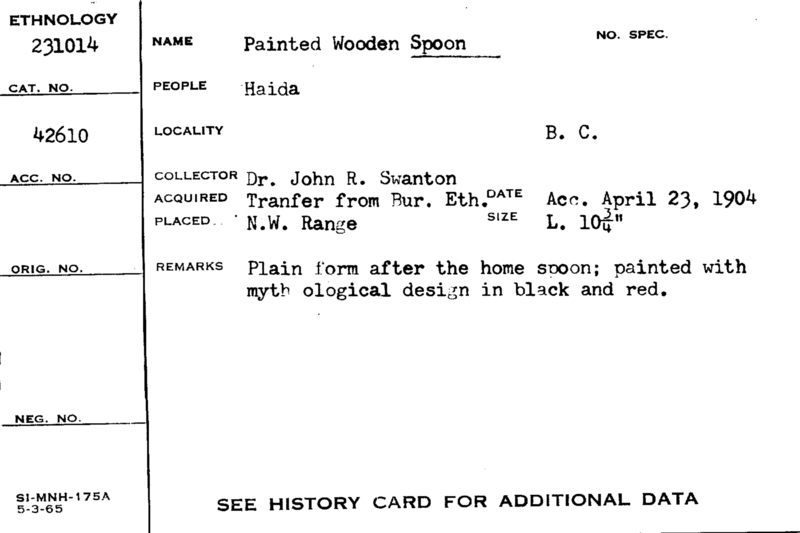
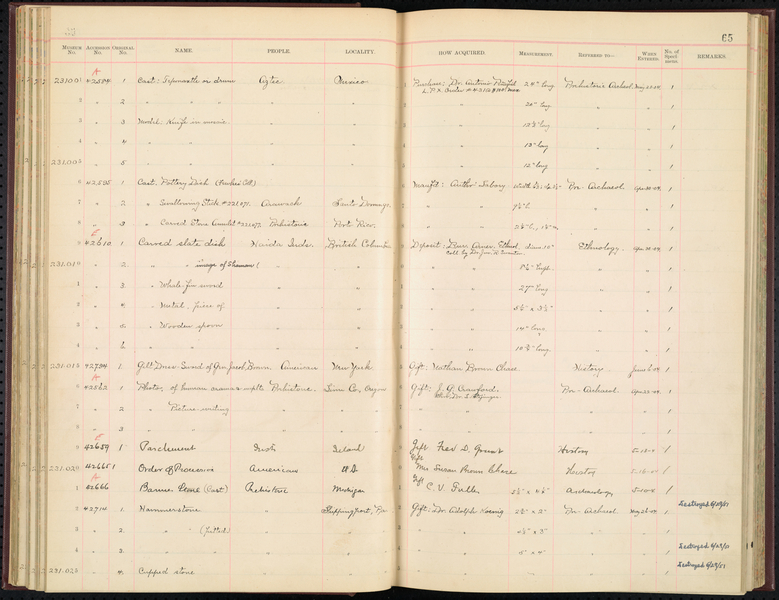
Notes
E-231014: Painted Wooden Spoon “Haida, British Columbia. Plain form after the home spoon; painted with mythological design in black and red.” (Catalog card)Comment from Graduate Student Research Paper, "A Report on Accession #42610 of the National Museum of Natural History", written by Athena Hsieh in April 2012, for the class "Anthropology in the Museum" taught by NMNH Curator, Dr. J. Daniel Rogers for the George Washington University. Approved for inclusion into notes by Dr. Igor Krupnik. Dr. Krupnik and NMNH has not verified the contents of the comment below, and suggests future researchers verify the remarks before citing Ms. Hsieh. The complete paper is attached to the accession record of this object in EMu. "This spoon is carved from a light-colored wood, possibly cedar, and is painted with a killer whale design on the front. The back of the spoon is undecorated. In describing traditional Haida spoons, Dr. Swanton wrote, “Sometimes they illustrate a story, sometimes they are the crests of the owner, and sometimes they are purely ornamental” (137). The stories most commonly told by the ornamentation on carved spoons were Raven stories, where Raven would occasionally be represented as human figures, both male and female. According to Dr. Swanton in, “only (hunting) members of the Raven clan, on the West Coast, used spoons when they ate black cod. The Eagles used their hands” (Swanton 1905, 57). Spoons were also used in potlatches for feasting and given away as gifts (164). However, most of the spoons Dr. Swanton based this research on were carved from goat's horn. His only mention of wooden spoons in “Ethnology” referred to illustrations of designs from wooden spoons “used in eating soap-berries” (147). This spoon, which has a flat, straight handle, does not appear to have been used as a utensil, suggesting that Dr. Swanton may have collected this from a craftsman selling trade goods. The lack of any complex designs or additional crest images supports this. Citations: Swanton, John R. 1905. “Contributions to the Ethnology of the Haida” in Memoirs of the American Museum of Natural History 8-1. New York: G. E. Stechert. Swanton, John R. 1905. Haida Texts and Myths: Skidegate Dialect. Washington: Government Printing Office."
Item History
- Made in British Columbia, Canada
- Collected by Dr. John R. Swanton in British Columbia, Canada
- Received from Bureau Of American Ethnology on April 23, 1904
What
- Name
- Painted Wooden Spoon
- Identification Number
- E231014-0
- Type of Item
- spoon
Who
- Culture
- Haida
- Field Collector
- Dr. John R. Swanton
- Received from
- Bureau Of American Ethnology
Where
- Holding Institution
- National Museum of Natural History
- Made in
- British Columbia, Canada
- Collected in
- British Columbia, Canada
When
- Acquisition Date
- on April 23, 1904
Other
- Accession Number
- 042610